Posts Tagged: Danaus plexippus
A Floral Bouquet Graced with Four Monarch Eggs
2020 was a troubling year for the monarch butterfly, Danaus plexippus. The severe population decline led the Xerces Society for...
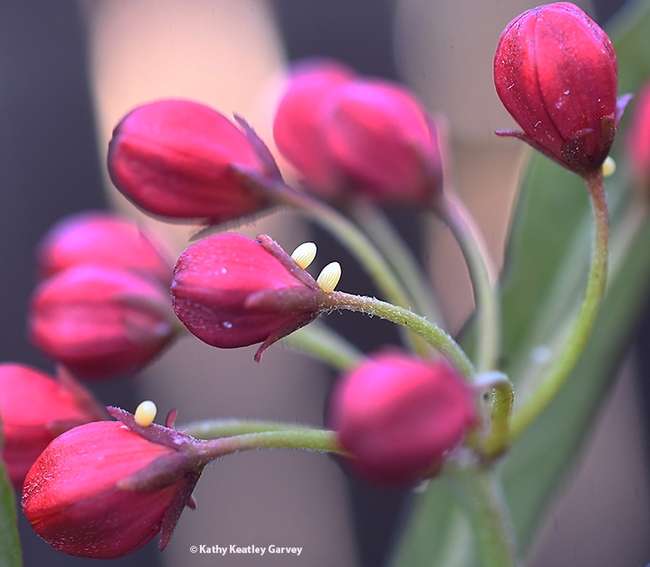
This "floral bouquet" of milkweed contains four monarch eggs. Image taken in Vacaville, Calif. (Photo by Kathy Keatley Garvey)
A Monarch Is Like a Stained Glass Window
Ever seen a back-lit monarch butterfly? It's like a stained-glass window in a centuries-old steepled church where you cannot see the ugliness...
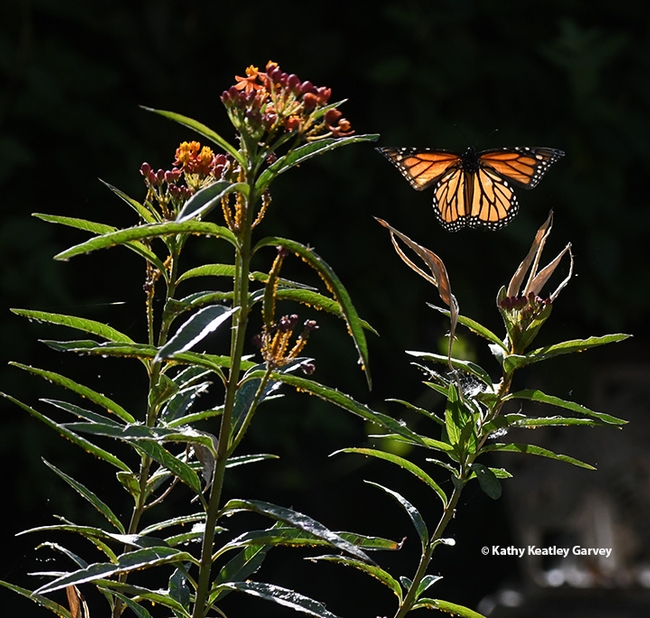
A monarch butterfly, looking like a stained glass window, rises from a tropical milkweed, Asclepias curassavica, on Aug. 7 in Vacaville, Calif. (Photo by Kathy Keatley Garvey)
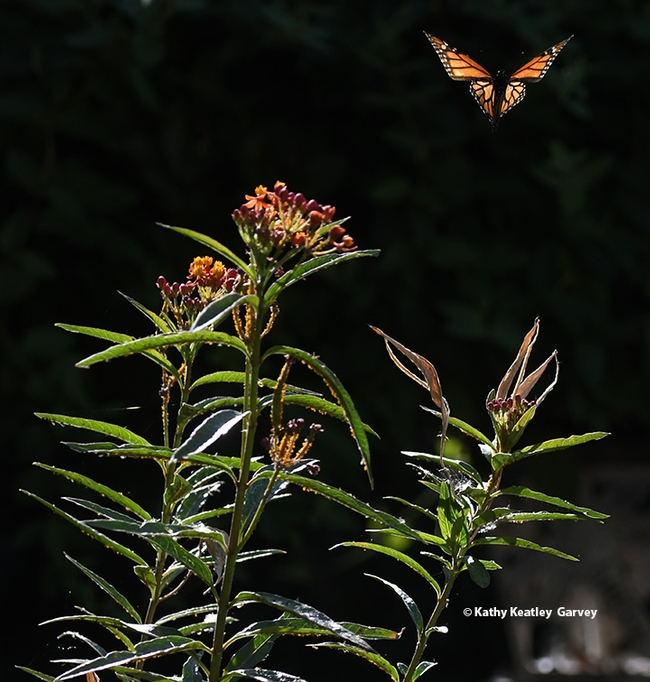
Up, up and away. The monarch rises from a tropical milkweed, Asclepias curassavica, on Aug. 7 in Vacaville, Calif. (Photo by Kathy Keatley Garvey)
The Joy of Rearing Monarchs
The monarch butterfly egg is oh-so-very-tiny but what an incredible work of nature! The intricate egg is about the size of a pinhead, 0.9mm wide...
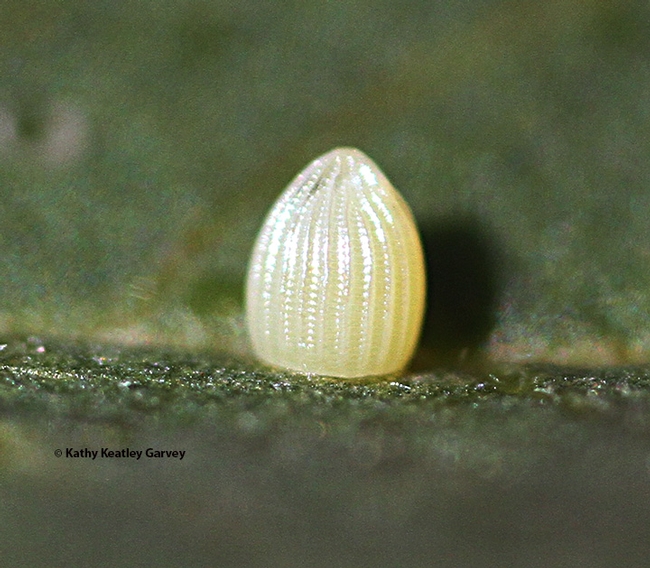
This is a close-up of a monarch egg, taken with a Canon MPE-65mm lens. It is about the size of a pinhead. (Photo by Kathy Keatley Garvey)
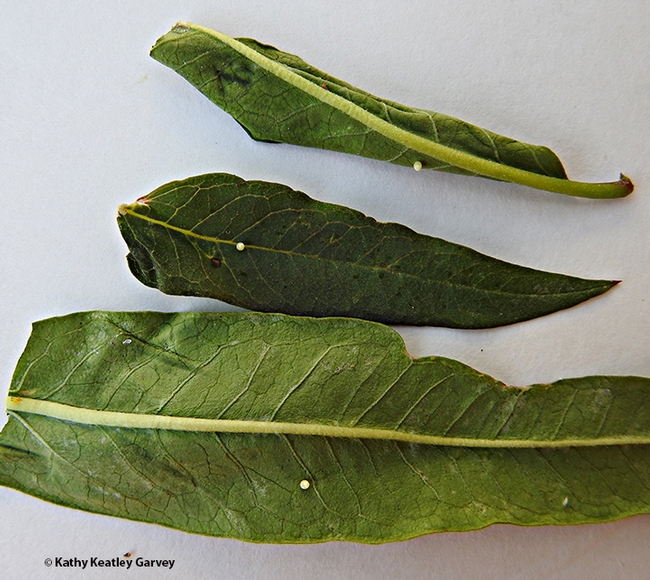
Three monarch eggs, one on each milkweed leaf (tropical milkweed Asclepias curassavica). (Photo by Kathy Keatley Garvey)
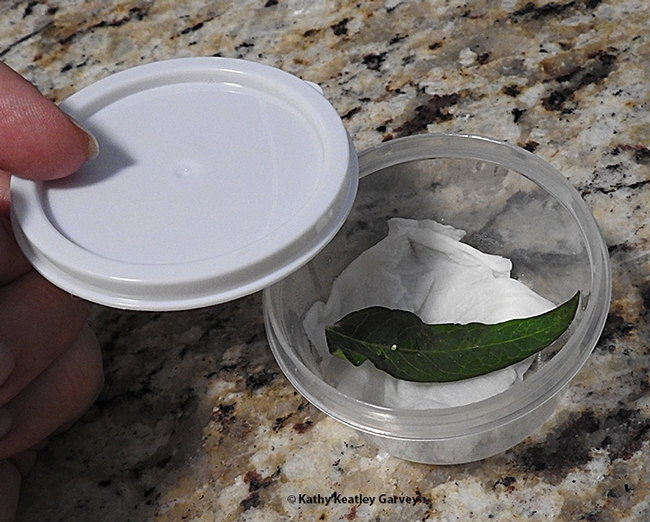
This is the small container that the Garvey family uses to rear monarch eggs. It is about 2 inches wide. (Photo by Kathy Keatley Garvey)
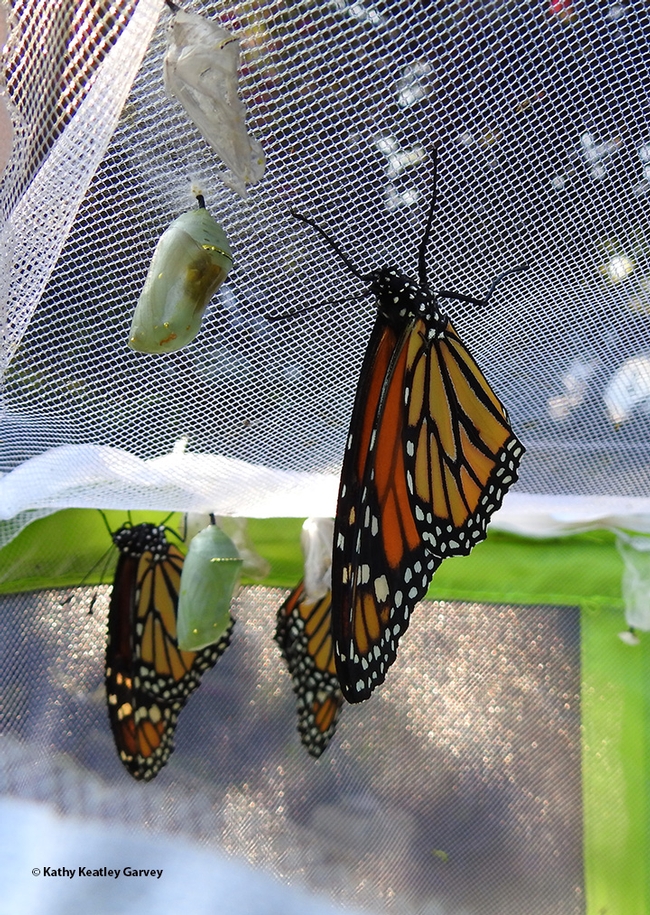
Be aware that if you collect a monarch caterpillar or chrysalis, it may already be parasitized. It is better to start with the egg, says Bohart Museum of Entomology associate Greg Kareofelas. Note the tachinid-infested chrysalis (brown spot). This image, taken in July 2020, shows two chrysalids and three newly eclosed monarchs. (Photo by Kathy Keatley Garvey)
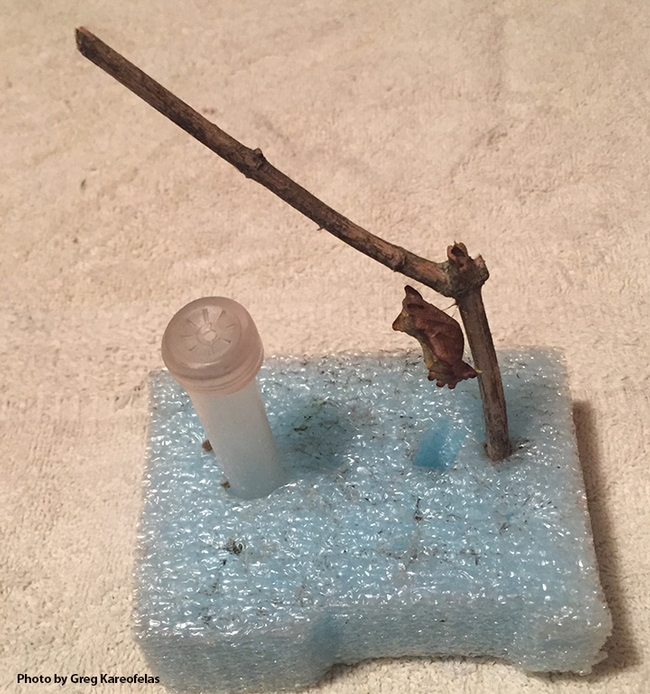
This is part of the Greg Kareofelas setup to rear butterflies. He rears many species. Note the packing foam and chrysalis (not a monarch). (Photo by Greg Kareofelas)
Independence Day and a Monarch
We call it the Fourth of July or Independence Day. Our 13 American colonies rose up against the monarch of Great Britain, King George III, and...
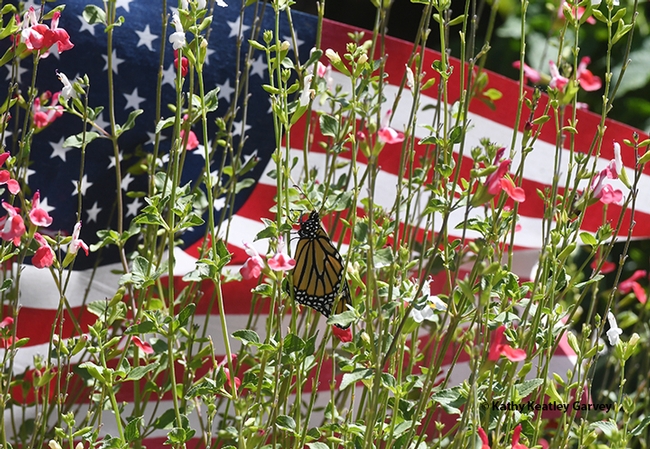
A monarch butterfly, Danaus plexippus, eclosed today (July 3) and is drying its wings on Hot Lips salvia, Salvia microphylla. (Photo by Kathy Keatley Garvey)
Leave Me Alone, Please--I'm Eating!
"Leave me alone, please--I'm eating." The monarch caterpillar feasting on the tropical milkweed, Asclepias curassavica, in Vacaville, Calif.,...
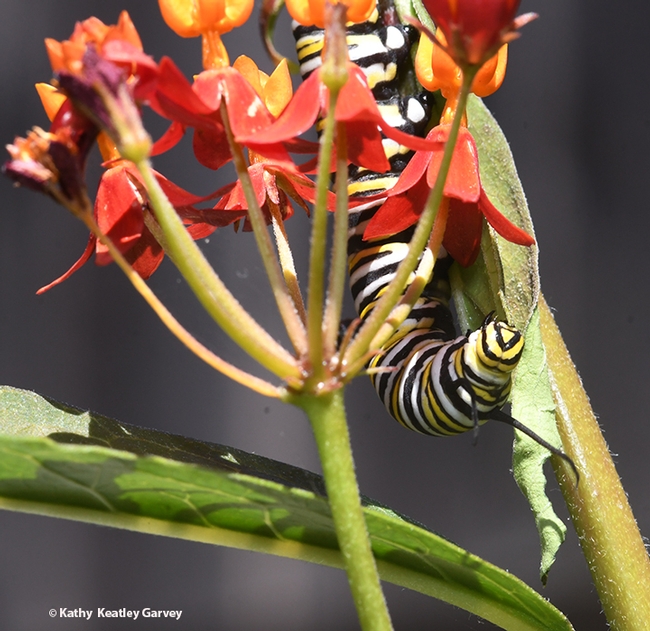
A monarch caterpillar feasting on a tropical milkweed, Asclepias curassavica, in Vacaville, Calif. (Photo by Kathy Keatley Garvey)
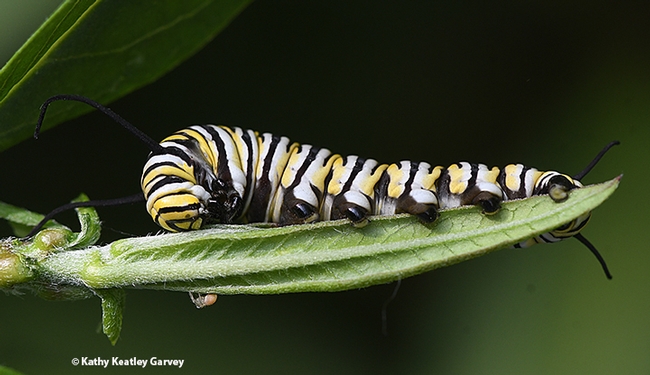
A monarch caterpillar stretches out on a leaf, binge eating. (Photo by Kathy Keatley Garvey)
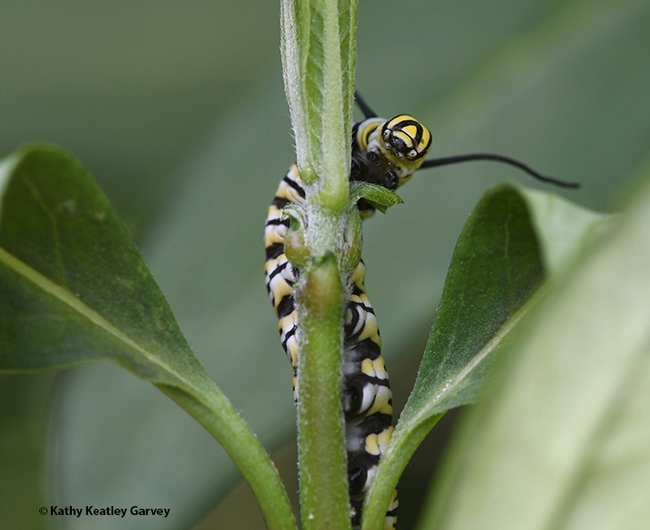
Well, hello there! But move along, please. Can't you see I'm eating? (Photo by Kathy Keatley Garvey)
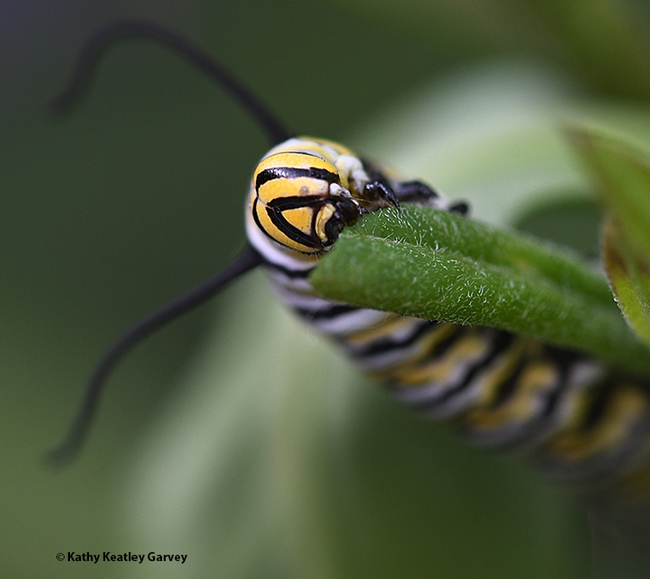
The milkweed is always greener on the other side. (Photo by Kathy Keatley Garvey)

